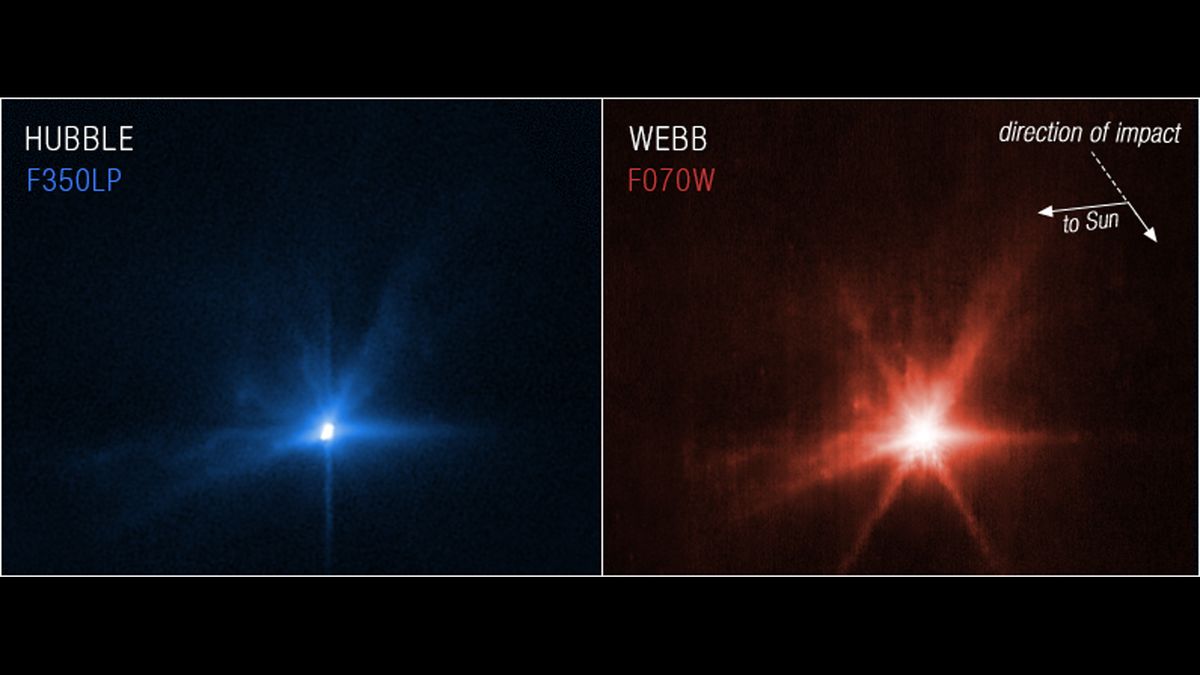
The James Webb Space Telescope observes the universe in the infrared (heat-emitting wavelengths), while the Hubble Space Telescope is a specialist in detecting optical light, the kind that is visible to the human eye.
Both Webb and Hubble observed the Didymos binary asteroid system before the collision of the 1,235-pound (560 kilograms) Double Asteroid Redirection Test (DART) spacecraft with the 525-foot-wide (140 meters) wide moonlet Dimorphos!Dimorphos orbits a 2,560-foot-wide (780 m) space rock called Didymos, and it's the orbit of the moonlet around the larger rock that the DART experiment was designed to alter. .
The asteroid pair, which at the time of impact was some 7 million miles (11 million kilometers) from Earth, appeared to Webb and Hubble like a dot of light that suddenly brightened when DART arrived.For example, they might be able to tell whether the ejecta is mostly made of fine-grained dust or larger rocky fragments, the European Space Agency (ESA), which cooperates with NASA on both projects, said in a statement (opens in new tab).
"For the first time, Webb and Hubble have simultaneously captured imagery from the same target in the cosmos: an asteroid that was impacted by a spacecraft after a seven-million-mile journey.
The so-called kinetic impact strategy demonstrated by the mission might one day save Earth from a collision with a stray space rock!
A small Italian cubesat called LICIACube, which traveled to the Didymos binary asteroid aboard DART but was released 11 days before the impact, observed the action as it unfolded from a distance of several hundred miles. .She later took a career break to pursue further education and added a Master's in Science from the International Space University, France, to her Bachelor's in Journalism and Master's in Cultural Anthropology from Prague's Charles University. She worked as a reporter at the Engineering and Technology magazine, freelanced for a range of publications including Live Science, Space.com, Professional Engineering, Via Satellite and Space News and served as a maternity cover science editor at the European Space Agency
